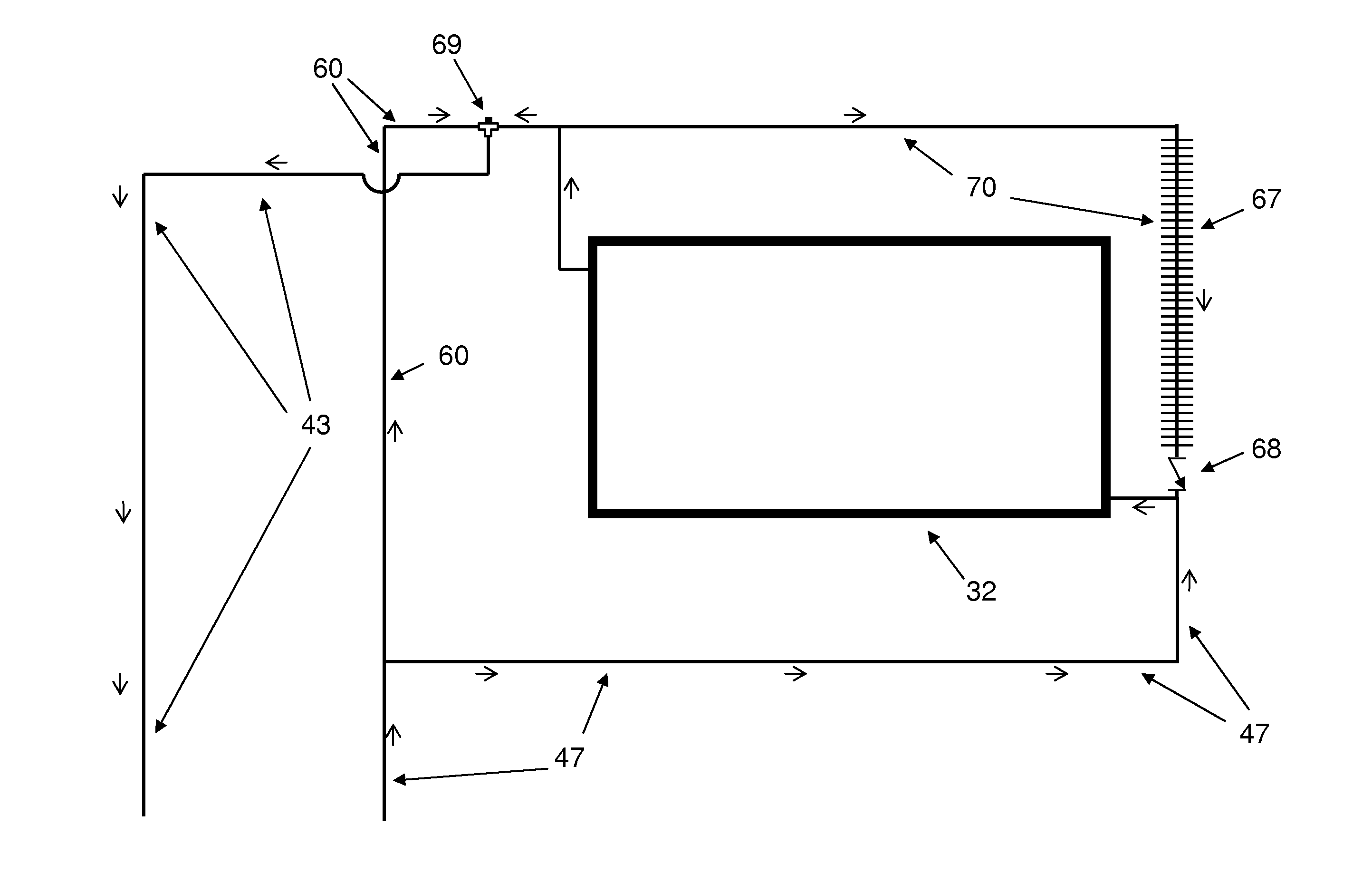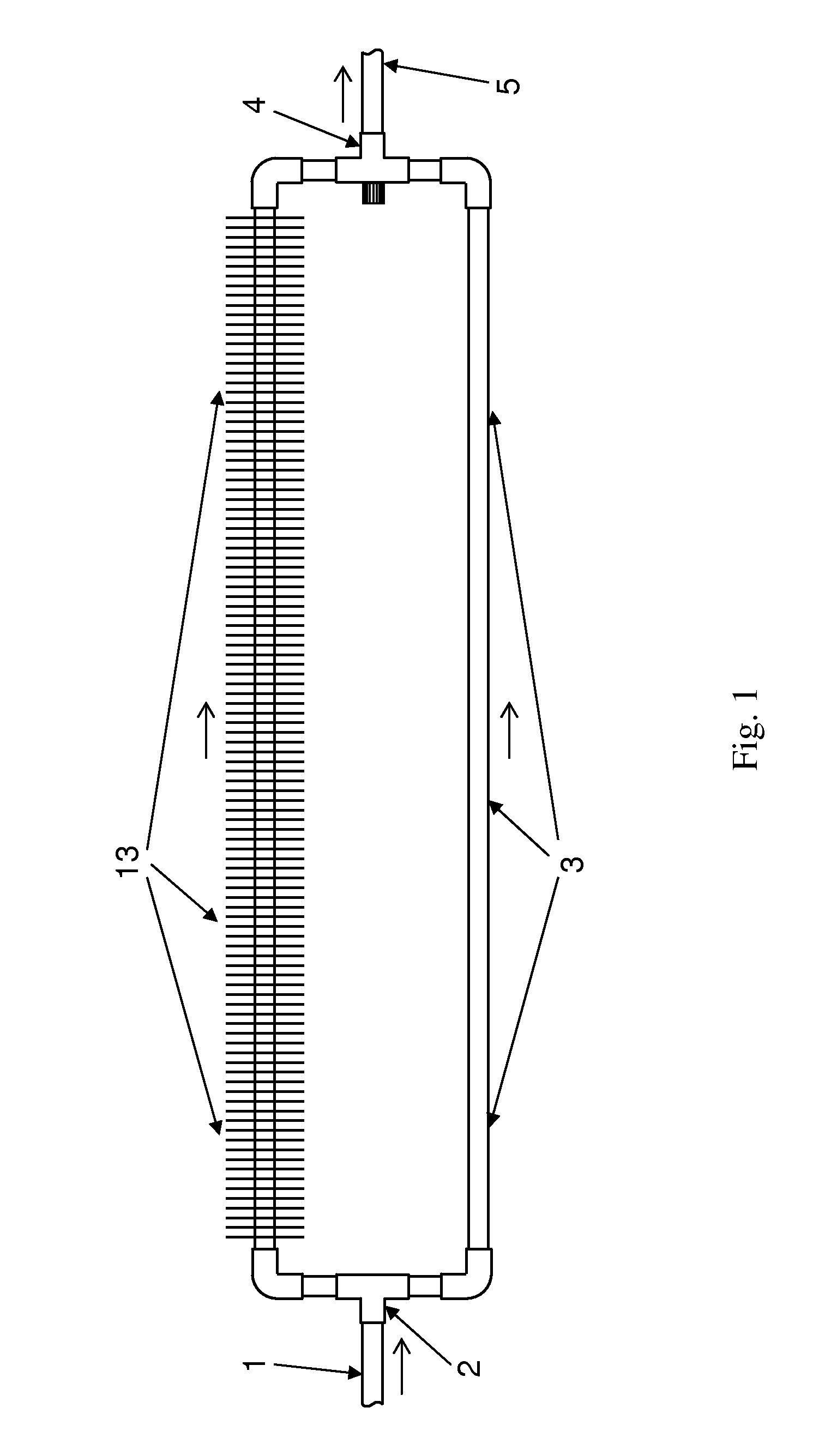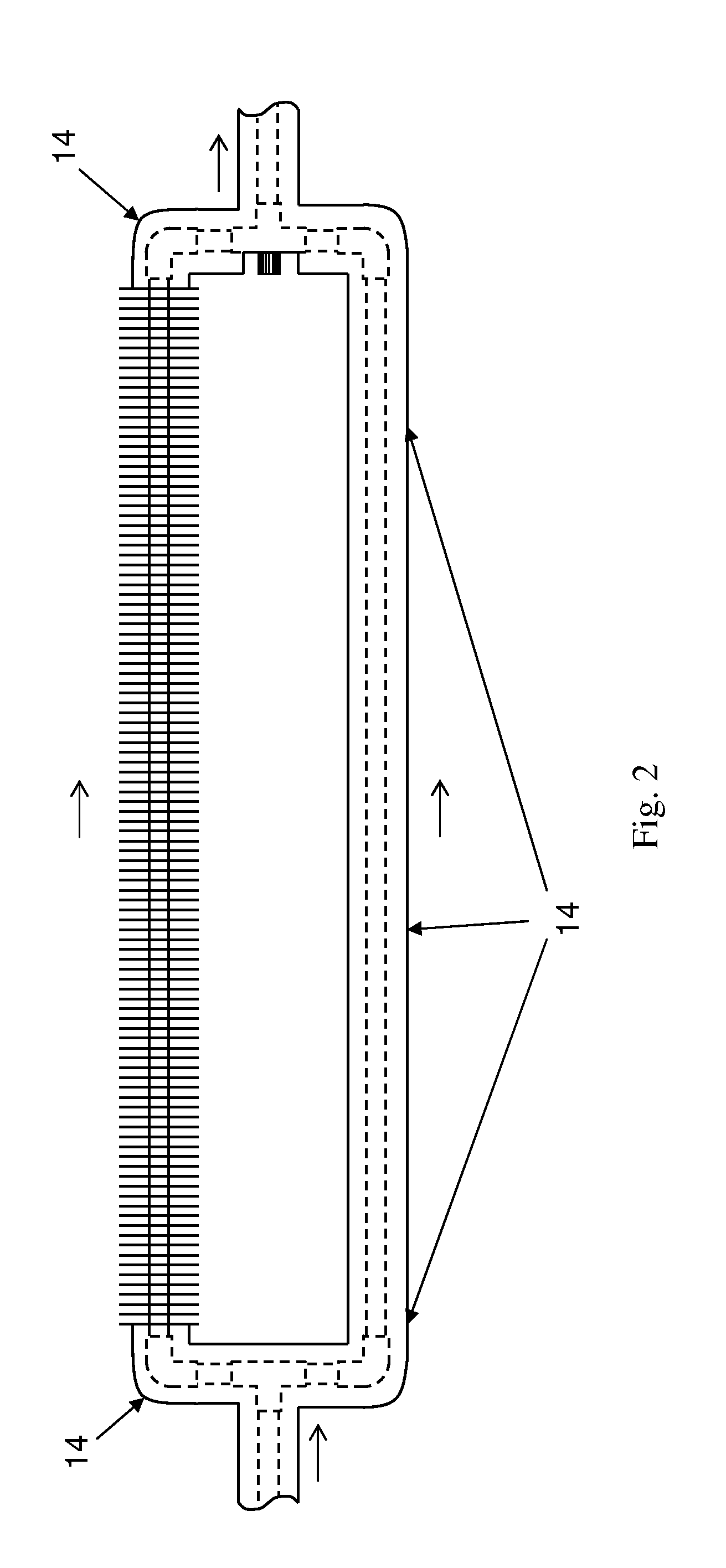Many solar thermal heating systems suffer from overheating problems, including the loss-of-load problem, the over-supply problem, and the loss-of-flow problem.
Loss-of-load and over-supply problems involve a mismatch in which the
heat supply from the solar collector or collectors is greater than the
heat load or demand.
The loss-of-flow problem involves a loss or degradation of system fluid flow usually due to pump stoppage or slowing.
Overheating of the fluid experiencing these problems sometimes leads to fluid breakdown, boiling and overpressurization in the solar collector(s), and consequently to damage to the solar collector(s) and other parts of the system.
However, closed-loop solar thermal systems do not have a
solid, proven means of dealing with overheating in all situations.
A classic loss-of load solar-hot-water problem typically arises when a family goes on vacation in the summer without putting the
solar system into vacation mode.
With the water in a
hot water storage tank already hot, and no calls for hot water, the system may overheat even with the system pump on because the solar collectors continue to add heat to the system which does not need it.
Fluid breakdown, boiling and over-pressurization of the fluid in the solar collector usually follow, with accompanying damage to the solar collector(s), the solar thermal system and / or to the fluid itself in the case of
antifreeze solutions.
If designers were to design a system with more solar collector area for more hot water in winter, the system could produce an over-supply of heat at times in the summer, thus potentially leading to overheating and consequent fluid breakdown, boiling and over-pressurization of the fluid, and accompanying damage as described above.
When the system fluid pump stops or slows down or for any flow degradation condition, the stagnant or nearly stagnant fluid in the solar collector on a sunny day may increase in temperature to the point where it breaks down and / or boils, again causing damage.
The allowed boiling may damage the system or fluid in the system.
This
protection system works only for flat plate solar collectors, and compromises the thermal integrity of the solar collector with openings and mechanical dampers which wear and eventually fail to close completely or properly.
This system only addresses a loss of flow, only works for a pressurized system, and by itself fails to prevent boiling.
This
damper system works only for flat plate solar collectors, and compromises the thermal integrity of the solar collector with openings and mechanical dampers which wear and eventually fail to close completely or properly.
This system is expensive and complex.
The system does not work for the loss-of-load problem, for the over-supply problem, for the partial-system-flow situation, nor any pump-on failure mode.
“When the fluid pump is off, the
working fluid circulates through the thermosyphon cooling loop, but when the fluid pump is on, the
working fluid circulates through a heating loop.” Overheating may still occur with this system in pump-on failure
modes.
In addition, because the cooling
assembly is “integral with” the back side of the solar collector, the system is not low-profile when flush-mounted to a roof.
This wastes energy, and results in longer times to bring the
storage tank up to temperature.
These systems are generally complex, expensive and difficult to service and to diagnose when troubles arise.
These systems risk allowing tank fluid temperatures to get too high, and waste water by discharging hot water down the drain and injecting cold water.
Such systems are potentially unsafe and wasteful of energy and water.
Solar thermal systems retrofit installations are infrequently done because of the expense and complexity of the installation.
Much of the complexity and expense come from the lack of an available heat dump or the difficulty and expense of
piping to a heat dump.
When they are done, such retrofit installations typically are undersized to prevent overheating problems.
Use of
renewable energy in solar thermal systems is hampered by the complexity and expense of installation and is underutilized by undersizing.
These valve arrangements do not provide in-line cooling, and require an
external source of cooling.
Such a cold return is not available in a solar thermal system and many other fluidic systems.
Such a cold source is not available in a solar thermal system.
However, typically the temperature of the
coolant coming from the radiator and reentering the engine is unregulated.
This may produce cold sections in the engine and lead to increased wear.
This system cools the oil when it becomes too hot, but does not control the amount of cooling as flow is simply directed into a heat dissipator without regard as to the fluid temperature exiting the heat dissipator.
This results in overcooling the engine oil, especially in very cold climates.
When a high temperature issue arises and is detected, it is usually too late, with the result being that some hydraulic component malfunctions or fails.
Current systems fail to prevent or mitigate high temperature conditions.
Most current cooling systems for machines that use these fluids fail to limit temperature or maintain a constant fluid temperature.
In addition, current fluidic systems without electronic controls don't adjust to changing conditions such as ambient temperature,
heat transfer rate from the heat dissipator, flow
rate change from pump degradation, flow path blockage, or fluid temperature change.
Adding electronic controls adds to the complexity of fluidic systems and adds extra expense.
 Login to View More
Login to View More  Login to View More
Login to View More 


